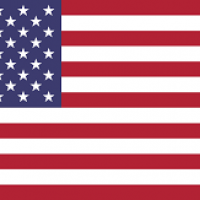House passes debt ceiling suspension that is doomed in the Senate
Get ready for a crisis for they are not going to kick the can down the road this time but the cure will not come until all the symptoms manifest first. Is the punch bowl dry ? Or just the spiking of it?
serf
https://www.cnbc.com/2021/09/29/debt-ceiling-pelosi-says-house-will-vote-to-prevent-us-default.html
he House on Wednesday passed a bill to suspend the U.S. debt ceiling as the country barrels toward a first-ever default with no clear solution in sight.
Republicans will sink the plan in the Senate. The GOP has opposed any effort to raise the borrowing limit and appears intent on making Democrats address it as part of their sprawling investment in social programs and climate policy.
Treasury Secretary Janet Yellen has told lawmakers the U.S. will run out of ways to pay its bills around Oct. 18. If Congress fails to suspend or raise the debt limit before the deadline, lawmakers risk a default that could cost millions of jobs, jeopardize government benefits and crash the financial markets.



Comments
At times like this, why does Congress revert back to pretending that the US dollar is actually backed by anything of value? The debt ceiling is just a number backed by nothing.
The charts below show clearly just how far the once mighty US Dollar has fallen. Until 1933, people carried gold coins in their pockets, and paper bills were exchangable for gold and silver coins at any bank. Prices were remarkably stable, and had been for a hundred years or more, except for periods of war or other calamities. In 1933, US citizen's gold was confiscated by the government, the dollar was devalued by 41%, and we entered a period in which the treasury attempted to hold the value of the dollar at 1/35 of an ounce of gold.
As you can see, this was largely successful until the late 1960s, when so much gold was required to buy up all the dollars foreign countries were selling that the US government simply gave up, and "closed the gold window" in 1971. The value of the dollar collapsed over the next 10 years, hitting bottom in 1980. By paying high rates of interest and reducing taxes, the dollar slowly recovered some of it's value over the next 20 years, but expansive money policy in the 1990s eventually caught up with the dollar in 1999.
Since 1999, the dollar has fallen in value from about 123 mg of gold to less than 21 mg today – a drop of more than 80%. Overall, from 1900 to 2010, the dollar fell from 1500 mg to 25 mg, losing over 98% of it's purchasing power. Penny candy now costs 50 cents. The "Five and Dime" is now the Dollar Store.
The future, however, looks even bleaker. Recent comments from the Federal Reserve indicate that near-zero interest rates and "quantitative easing" (Fed-speak for money printing) can be expected to continue "for an extended period".